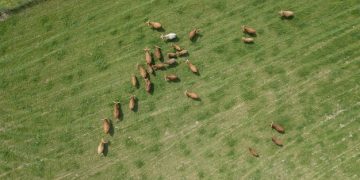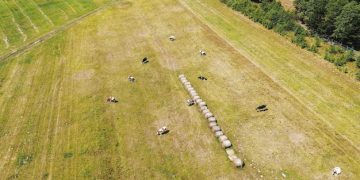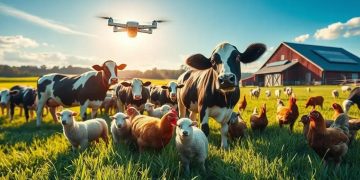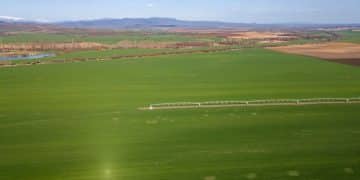Livestock Monitoring Systems: Enhancing Animal Welfare Through Wearable Tech
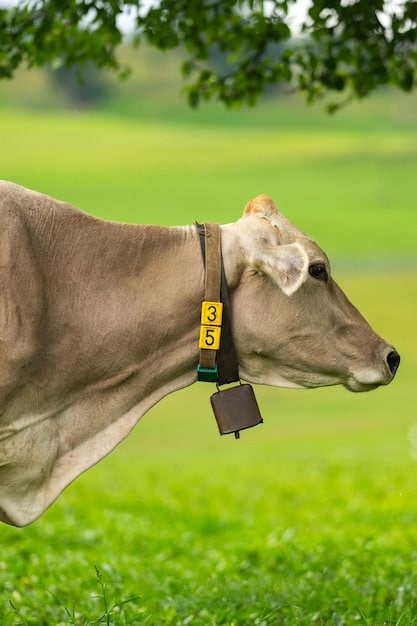
Livestock monitoring systems utilize wearable sensors for early disease detection, improved animal welfare, and optimized farming practices, leading to healthier animals and more efficient agricultural operations.
The agricultural landscape is undergoing a technological transformation, and at the forefront of this revolution are livestock monitoring systems. These innovative systems, powered by wearable sensors, are not just about tracking animals; they represent a paradigm shift in how we approach animal welfare, disease prevention, and overall farm management.
Understanding Livestock Monitoring Systems
Livestock monitoring systems are advanced technological solutions designed to remotely track and monitor the health, behavior, and environmental conditions of livestock. These systems gather real-time data, providing farmers and veterinarians with crucial insights for proactive management.
By leveraging wearable sensors attached to animals, these systems offer a comprehensive overview of individual and herd health, enabling early detection of diseases, optimizing feeding strategies, and enhancing overall animal well-being.
Key Components of Livestock Monitoring Systems
At the heart of these systems are wearable sensors. These sensors are designed to be lightweight, durable, and comfortable for the animals. They continuously collect data, which is then transmitted to a central processing unit. Here’s a breakdown of the key components:
- Wearable Sensors: These devices come in various forms, such as collars, ear tags, and boluses, each designed to monitor specific parameters.
- Data Transmission: The sensors transmit data wirelessly using technologies like Bluetooth, Wi-Fi, or cellular networks.
- Central Processing Unit: This unit receives and processes the data, often utilizing cloud-based platforms for storage and analysis.
- Software and Analytics: Advanced software algorithms analyze the data, identifying patterns and anomalies that indicate potential health issues.
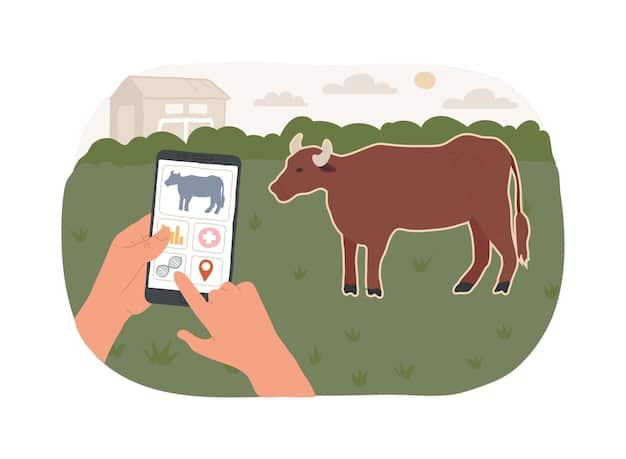
These components work in synergy to provide farmers with a comprehensive and real-time view of their livestock, allowing for timely intervention and improved decision-making.
In conclusion, livestock monitoring systems are a groundbreaking technology that combines wearable sensors, data transmission, and advanced analytics to improve animal welfare and farm management.
Benefits of Early Disease Detection
Early disease detection is one of the most significant advantages of implementing livestock monitoring systems. Traditional methods of disease detection often rely on visual observation, which can be subjective and may not catch subtle signs of illness until the condition has progressed.
Wearable sensors, on the other hand, can detect physiological changes in animals long before any visible symptoms appear. This allows for quicker intervention, reducing the spread of disease and minimizing losses for farmers.
How Wearable Sensors Detect Early Signs of Disease
Wearable sensors can monitor various parameters that serve as indicators of an animal’s health. These include:
- Body Temperature: A rise in body temperature is often an early sign of infection.
- Heart Rate Variability: Changes in heart rate patterns can indicate stress or illness.
- Activity Levels: Reduced activity can signal discomfort or fatigue associated with disease.
- Rumination Patterns: Altered rumination behavior in cattle can suggest digestive issues or sickness.
By continuously monitoring these parameters, the system can flag any deviations from the norm, alerting farmers to potential health issues.
Ultimately, early disease detection through livestock monitoring systems can prevent outbreaks, reduce treatment costs, and improve the overall health and productivity of the herd.
Enhancing Animal Welfare Through Continuous Monitoring
Beyond disease detection, livestock monitoring systems play a pivotal role in enhancing animal welfare. These systems provide a wealth of data that allows farmers to tailor their management practices to meet the individual needs of each animal.
By understanding an animal’s behavior, activity levels, and environmental conditions, farmers can create a more comfortable and stress-free environment, leading to improved well-being and productivity.
Specific Ways Livestock Monitoring Systems Improve Animal Welfare
These systems facilitate better animal welfare in numerous ways:
- Optimized Feeding Strategies: Monitoring weight gain and nutritional needs ensures animals receive the right amount of feed.
- Improved Comfort: Sensors can detect overcrowding, poor ventilation, and other environmental stressors.
- Reduced Stress: By identifying and mitigating potential stressors, the system helps create a calmer environment.
In the end, continuous monitoring translates to a more humane and efficient farming operation, benefiting both the animals and the farmers.
Types of Wearable Sensors Used in Livestock Monitoring
The effectiveness of livestock monitoring systems hinges on the accuracy and reliability of the wearable sensors. These sensors are designed to collect data on various aspects of an animal’s health and behavior.
Different types of sensors cater to specific monitoring needs, each offering unique advantages. Understanding the types of sensors available is crucial for implementing a successful livestock monitoring system.
Common Types of Wearable Sensors
Several types of wearable sensors are commonly used in livestock monitoring:
- Collars: These are typically equipped with GPS trackers, accelerometers, and microphones to monitor location, activity levels, and vocalizations.
- Ear Tags: These can measure body temperature, heart rate, and other physiological parameters.
- Boluses: These are ingested devices that reside in the animal’s stomach, monitoring internal temperature, pH levels, and other digestive metrics.
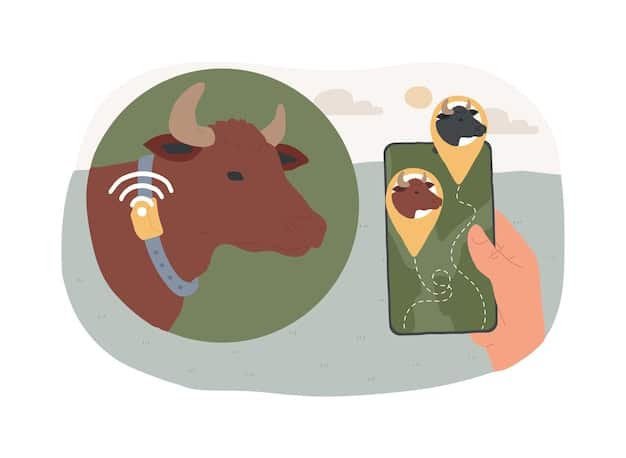
Choosing the right type of sensor depends on the farmer’s specific monitoring goals and the characteristics of the livestock being monitored.
In summary, wearable sensors are the cornerstone of livestock monitoring systems, offering a wide range of capabilities for collecting data on animal health and behavior.
Challenges and Considerations for Implementing Livestock Monitoring Systems
While livestock monitoring systems offer numerous benefits, there are also challenges and considerations to keep in mind when implementing these technologies. Factors like cost, data management, and animal comfort can impact the success of the system.
Careful planning and preparation are essential to overcome these challenges and ensure that the system operates effectively and efficiently.
Key Challenges and Considerations
Here are some of the critical challenges and considerations:
- Cost: The initial investment in sensors, infrastructure, and software can be significant.
- Data Management: Managing and interpreting the vast amounts of data generated by these systems requires expertise and robust data management tools.
- Animal Comfort: Ensuring that the sensors are comfortable and do not interfere with the animals’ natural behavior is crucial for acceptance and adoption.
Addressing these challenges upfront will increase the chance of a successful implementation.
To conclude, implementing livestock monitoring systems requires careful consideration of various challenges, including cost, data management, and animal comfort. Addressing these challenges proaritively maximizes the benefits of livestock monitoring technology.
The Future of Livestock Monitoring: Trends and Innovations
The field of livestock monitoring is rapidly evolving, with ongoing research and development leading to new innovations and capabilities. As technology advances, these systems are becoming more sophisticated, affordable, and user-friendly.
Keeping abreast of these trends is essential for farmers looking to leverage the full potential of livestock monitoring technologies.
Emerging Trends and Innovations
Several exciting trends are shaping the future of livestock monitoring:
- AI and Machine Learning: These technologies are being used to analyze data and provide more accurate and actionable insights.
- Integration with Other Farm Management Systems: Seamless integration with other farm management software can streamline operations and improve overall efficiency.
- Improved Sensor Technology: New sensors are being developed to monitor a broader range of parameters with greater accuracy and reliability.
These trends promise to further enhance the capabilities of livestock monitoring systems, making them an indispensable tool for modern farmers.
| Key Highlights | Brief Description |
|---|---|
| 🌡️ Early Detection | Wearable sensors detect early signs of disease, enabling quicker intervention. |
| 🌱 Animal Welfare | Continuous monitoring enhances animal comfort and reduces stress. |
| 📊 Data Insights | Advanced analytics optimize feeding and environmental conditions. |
| ⚙️ Sensor Types | Collars, ear tags, and boluses monitor various parameters. |
FAQ
Livestock monitoring systems use wearable sensors to track animal health, behavior, and environmental conditions in real-time. These systems provide valuable data to farmers, enhancing farm management and animal wellbeing.
Wearable sensors continuously monitor vital signs like body temperature, heart rate, and activity levels. Deviations from normal patterns trigger alerts, enabling early intervention before symptoms become visible to the naked eye.
Collars, ear tags, and boluses are common. Collars track location and activity; ear tags measure physiological data; and boluses monitor internal conditions within the animal’s stomach, making the data comprehensive.
Continuous monitoring allows farmers to optimize feeding, improve comfort, and reduce stress by identifying potential stressors. Early awareness helps provide a calmer environment, leading to enhanced animal well-being and productivity.
While initial investments may be high, early disease detection reduces treatment costs and minimizes losses from livestock death. Optimized feeding strategies enhance growth and productivity, leading to better economic outcomes.
Conclusion
In conclusion, livestock monitoring systems represent a transformative technology for the agricultural industry. By providing farmers with real-time data and actionable insights, these systems enable early disease detection, improved animal welfare, and optimized farm management practices. As technology continues to evolve, the future of livestock monitoring holds even greater promise for creating a more sustainable and efficient agricultural ecosystem.
